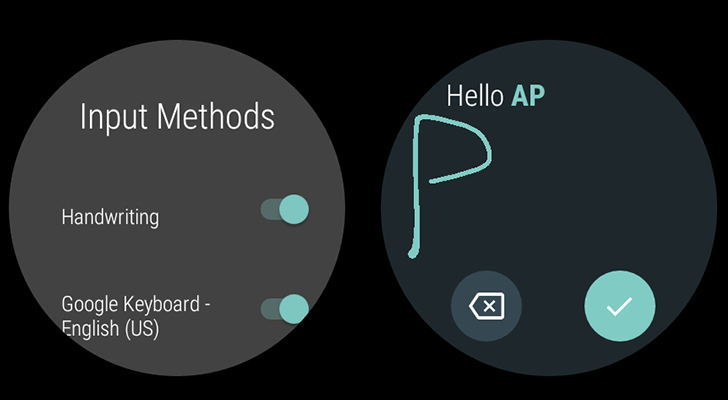After Google released the Android Wear 2.0 Preview images for the Huawei Watch and LG Watch Urbane 2nd Edition, many of us quickly flashed the firmware onto our watches to test out the new features. Most of the major changes are pretty easy to find, and some could even be said to be a little in-your-face. However, we saw quite a few people were confused by what seemed to be the absence of the handwriting keyboard. It turns out that it's just not enabled by default on the preview firmware. While it's not exactly buried, knowing that it has to be activated and where to go isn't very intuitive; so we've made a quick how-to guide for those that got a little lost.
Disclaimer: These steps work on Android Wear 2.0 Preview 1, and may not match precisely in future releases.
Enabling The Handwriting Keyboard
Step 1 – Get to the right settings screen
Start by launching the Settings app. This can be done either by pulling down the quick settings panel while the watchface is showing or by launching it from the app drawer.
Once in Settings, find Input Methods in the list and open it. Now tap on the 3-dot option that lists the "Current" keyboard. Notice the list only contains Google Keyboard. Tap the button labeled CHOOSE KEYBOARDS.
Step 2 – Enable and switch to the Handwriting keyboard
At this point, you should be looking at a screen with a couple sliding toggles. The Handwriting toggle is probably disabled and the Google Keyboard toggle is enabled. Tap the Handwriting line to switch it to enabled if it isn't already, then back out to the previous screen using the hardware button.
The list of keyboards now contains Handwriting, but the big white dot is still set to Google Keyboard. Tap the Handwriting line to switch the selector to that keyboard, then hit the hardware button to back out one more step.
Note: At this point, the handwriting keyboard is enabled and selected. The next step is optional.
Step 3 – Manage Handwriting keyboard settings
If it wasn't obvious before (and it isn't), the items on the Input Methods screen after the 3-dot item are shortcuts to the individual Settings for each keyboard. Tap on the Handwriting keyboard to make some selections. (Yeah, this settings screen isn't even remotely optimized for round displays.) The list of options include a language selector and options to send handwriting samples and usage statistics back to Google. Usage statistics are enabled by default, but the samples are not. Make changes as you see fit.
Step 4 – Using the keyboard
Anytime a text input option becomes available, a screen with three icons will appear. From left to right, they are a microphone for voice dictation, a smiley for emoji entry, and a keyboard for text input with whatever keyboard you've selected. Tap the keyboard to start the handwriting input.
Tip: Long-press on the keyboard icon to quickly switch between keyboards without going back to the Settings screen.
Using the Handwriting keyboard is really straight-forward, especially if you've seen the demos. You simply use a finger to draw letters, numbers, and symbols. Once you start drawing, the text will slide away to the left (or presumably to the right for RTL languages). Short pauses or larger gaps between words can help the keyboard figure out where spaces belong. There's a backspace key at the bottom-left that will delete a single character with a tap or many characters with a press-and-hold. There's a confirmation button in the form of a checkmark to the right.
That's about it. Have fun with the Wear 2.0 Preview!

